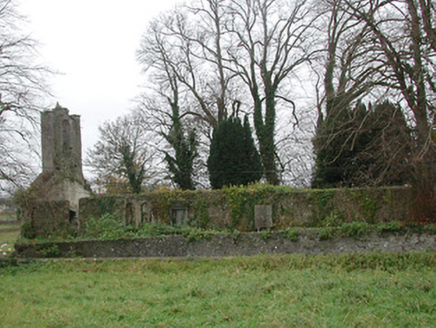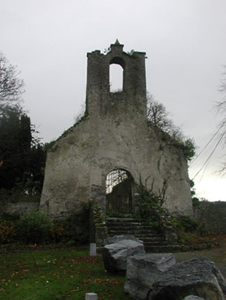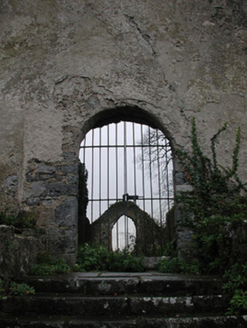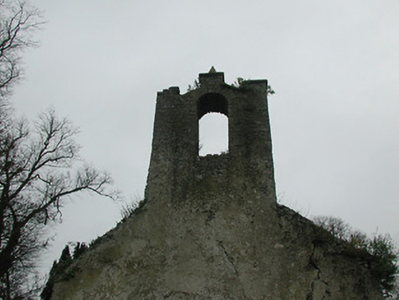Survey Data
Reg No
12315007
Rating
Regional
Categories of Special Interest
Archaeological, Architectural, Artistic, Historical, Social
Original Use
Church/chapel
Date
1640 - 1660
Coordinates
249757, 143015
Date Recorded
05/07/2004
Date Updated
--/--/--
Description
Detached five-bay double-height single-cell Church of Ireland church, c.1650, possibly incorporating fabric of earlier church, pre-1540. Closed, 1844. Now in ruins. Pitched slate roof now gone with unpainted lime rendered rubble stone bellcote to gable to west (with round-headed aperture having red brick voussoirs, flanking finials to cut-stone coping, and central finial having cut-stone coping with pointed pinnacle). Unpainted lime rendered walls over random rubble stone construction having batter with buttresses to north. Pointed-arch window openings (some paired to south elevation) with red brick dressings, squared rubble stone voussoirs, and no fittings remaining. Round-headed door opening to west approached by flight of eight cut-stone steps having rubble stone parapets, and wrought iron double gates. Set perpendicular to road with forecourt, and random rubble stone boundary wall to perimeter of site. (ii) Graveyard to site with various cut-stone markers, c.1650-present.
Appraisal
A small-scale church representing one of the oldest surviving structures in Kells occupying one of the longest established sites in the village: historic records indicate that a pre-Norman Catholic church was built on the grounds prior to the establishment of Kells Priory in the twelfth century; following the dissolution of the priory by Henry VIII (1491-1547) in 1540 the present structure was re-adapted as a Church of Ireland place of worship until superseded in 1844. Although long disused the primary architectural attributes of the composition prevail with the church being identified by the distinctive batter to the walls together with the elegant bellcote, and so on. Occupying a prominent position in the village the church forms an appealing landmark in the streetscape: an attendant graveyard including cut-stone markers of artistic design merit further enhances the picturesque appeal of the setting.







